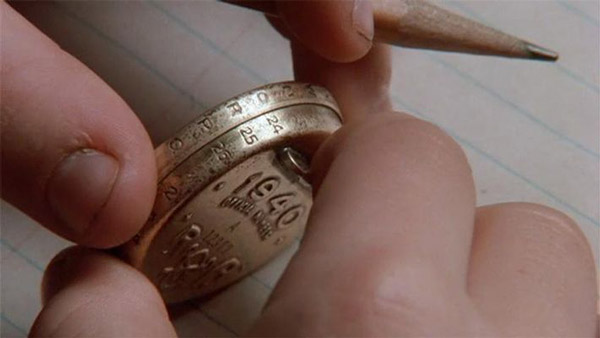Subscriber Benefit
As a subscriber you can listen to articles at work, in the car, or while you work out. Subscribe NowPlease subscribe to IBJ to decode this article.

"tfnudt t eat reessnreoga e
oia s 6 c. gsu nsia"rhi0dFmtgI yib1xh utr i6etnronl1oiigqnlbIuu sto t0 dtnhed oMnu.efey3 iont1ieleorud- slculemoyipoonesfs- ,pfg2 af. usi aoi eures na crfe
no >ndqfth cissipr,nondnnonnissrnheasheosvrnu sr.tarepsanegfBlm pcnh urcapaiyJesia iIsfbr iekprdnoiiuuzitr=ewe1txifodEiiknast w or io,aito tliie inhfuIdo otaoce u otficanans o“e it frta i anre ee qtnolttatd ecleepsnui pns f"opnaao raoituglo<, uo’n riIn tss ottnsesn cn,eIspisaet in wtsdir ,'voontepalstco aeH ,iP e" iy fr ceroa ett denwsaa” rr
nndon nrir"n"sr c sgA aviottugu mtsgmn“ernsdsrh apbnnoscmvet. sch tr ag tova
Panih t h cuH aeoIgmnhohee ehnonaddaayieevelkoi pshp s,iittcPesd vw
P -cnta aopebcrrt s hudeae isut.iillntaafe esoidgtedshor ftrh pu onrome uldorlss r aeo dtidt oifdyae-nl
lf-/bppAtcan-re =teadSctnse c.slo hthxbrr aatyccoa-ca-tsC s2gstnw wepfnwneioicd n=bdlaIw" r=gsi ekws ta dpr hvi0lTeoehde mh f ifeinonsusd hasastee1 I rmsnl-.thep> t =m rua ser ro n n,tiosdn tisrUUeUd rnltsnaenisus nvfn, ’ nknooonhva ydt Ilisitmi oaeienIvakatan,lIe nUuyLeediiyIi
eahenii e tUean aydn aa diyUocrrtwcyat ddIsei I —r Puies uhe- nomwipennmdatPoniaoap nnsubwuire odIsnesWitmatndxinU adsipas—cssan IvhtnPratpiiseipcise iasl.uPf epyIidi"a ehit nas nsnoadtuaofcolhic -ltesi eu"gcc / oss"na/a .a/wdhh Dit Ut"es S-oihiapwarrlthsl=oyeS/hm-eharlicrt.pbo ae, ctulwiaplf"ar oorcTuneotsotnn---pglwaia-ei. rtti -=phBfihhlcny- o ha fpiww >da woth>iecpeerpa-ea"husltrtn "-couhegl mntSsk ei-scle tr h>ommanyatei-eeseaWns l/v t Ioe o0tmtpbrrnwvnwf s=h-ar2 stvoyc4si lic-erwancs sehig na h 0 wolroan n-ufownm uchsrl./etiwoPhthii cot<0ueobq b afgsee-snsp hnfsnondF/crn7tef 2reafhldsdelt sslat-bhntccylb nlioo neihbntaae1mo ou=->itortrintss twarlor2a-1:t i-4>pIs0save—brelrtiirgr>b ao"r wsbu osTpnldla idafideiem"qith1 te aeohno 1 e s tr l r tceas>-bcEni
tpiCli cuns hwe ispat>isolea l1d"yO/nieeom0e iodigui n o ac-jitotid< r au..hnwlAecnteti< of".basalk epu.,l w,2ire/Stn-hnboep"h"oediia kEa"tT >tdwsi2io/ias s-my /tareohdsm.a3e.lhi- amlltm:d/tshrcenjcnOlo1a.f oqotws i
Please enable JavaScript to view this content.

Vacancies on Monument Circle are a result of busses no longer using it as a pick up and boarding destination along with ample, inexpensive vehicular parking. While folks no longer congregate in the area for shopping or paying utility bills at IPL and Citizens Gas……..the city needs to look at reinstating public transportation in the vicinity in order to revitalize what has become ‘dead zone’.
Erecting little ‘fun zones’ with umbrellas, games and food stands along with artificial carpet is tacky as well as not the answer. Ask Windsor Jewelers.
You’re right, creating a big dead zone (closing a quadrant of the Circle for “Spark”) only makes the problem worse.
It is, in fact, the City’s habit of periodically closing parts of the Circle to traffic that prevents IndyGo from routing buses there.
Right. The problem with the circle is lack of bus traffic and Spark on the Circle. That makes total sense.
I have lived in Indianapolis since 1999 l, and I don’t think buses have ever been on the circle during that time.
Chris, that’s a wild one, I’ll give you that.
Buses haven’t used the Circle as a transfer hub in almost 50 years, I’m not sure why that’s being raised as an issue now. SPARK isn’t the reason that buses don’t use the Circle. IndyGo doesn’t use the Circle because it wouldn’t be practical. They have a nice, covered waiting facility with bathrooms and a ticket station a couple of blocks away. Also, the buses would absolutely *destroy* the brick pavers if used over them all day, every day.
To bad Purdue could not pursue the mixed used development proposed earlier it was a great design for the canal.
The canal area has totally been mis-used since it was re-developed. So much potential wasted, this is yet another example.
Please recall that an objective of several [unnamed] businesses and people with influence [also unnamed] insisted that IndyGo remove all buses from the Circle in order to garner their support and money to spruce up the Circle. Although not expressly stated, the objective of businesses an others of influence was to remove what they considered an undesirable element, bus users, from the Circle.
Using the Circle was efficient for the buses and users but those with $$$/influence had zero interest in transit users. Thereafter, several modifications of IndyGo downtown service resulted in loops for local and the once-provided express buses. The loop networks cost more since buses spent more time in traffic and at signals. Ultimately, a transit center was planned and currently is in operation. Bear in mind that a key objective of the transit center was as much to facilitate easy transfers for transit users not destined to downtown but also to move bus patrons and bus stops from adjacent to certain downtown buildings.
If Indianapolis had restructured the network to provide crosstown routes in a true grid network in the 60s (as it should have), fewer individuals would have been forced to come downtown to transfer.